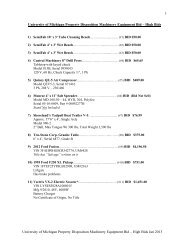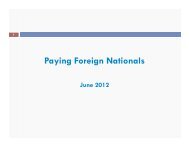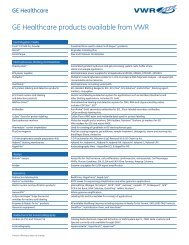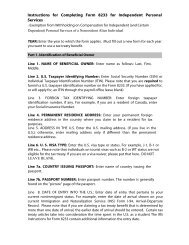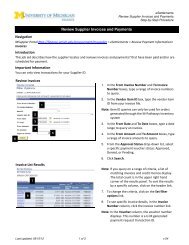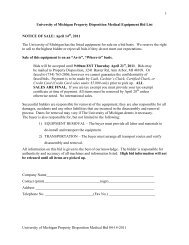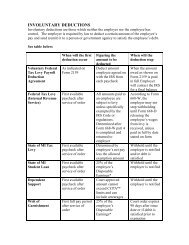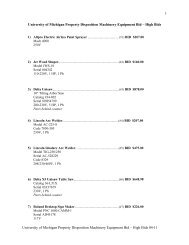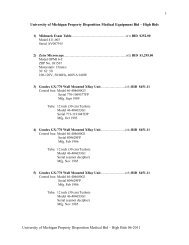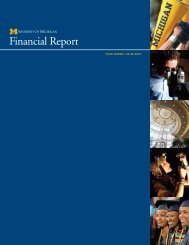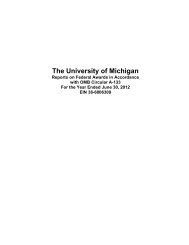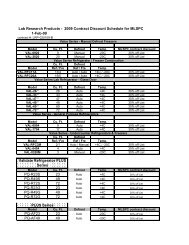2010 A-133 Report - Finance - University of Michigan
2010 A-133 Report - Finance - University of Michigan
2010 A-133 Report - Finance - University of Michigan
Create successful ePaper yourself
Turn your PDF publications into a flip-book with our unique Google optimized e-Paper software.
THE UNIVERSITY OF MICHIGAN<br />
Management's Discussion and Analysis (Unaudited)--Continued<br />
The <strong>University</strong>’s MHealthy initiative is a campus-wide effort to encourage healthier living<br />
through increased activity, attention to physical safety in the workplace, and other health and<br />
wellness efforts. The health and wellness programs <strong>of</strong>fered by the <strong>University</strong> through this<br />
initiative have resulted in greater integration <strong>of</strong> evidence-based wellness programming into the<br />
<strong>University</strong>’s benefit programs. During <strong>2010</strong>, MHealthy completed the second university-wide<br />
health risk assessment, with more than 15,000 faculty and staff completing an online health risk<br />
questionnaire. Data gathered from this assessment will be used to design programs to address<br />
the greatest areas <strong>of</strong> community health risk and thereby reduce the costs incurred by the<br />
<strong>University</strong>.<br />
Effective January 1, <strong>2010</strong>, after careful review by the <strong>University</strong>’s nationally recognized health<br />
policy faculty and financial experts, the <strong>University</strong> commenced a new health benefits cost<br />
sharing program which is being phased in over two years. Once fully implemented, the<br />
<strong>University</strong>’s overall contribution toward the health care <strong>of</strong> employees, retirees and dependents<br />
will be 70 percent <strong>of</strong> the total cost <strong>of</strong> premiums, co-pays and deductibles. Down from the<br />
current 80 percent overall contribution, the new target is more in line with average<br />
contributions <strong>of</strong> peer universities and health systems. The percentage applied to each<br />
individual depends on the plan choice and whether dependents are covered. Under the new<br />
structure, contribution amounts will be based on salary bands which are designed to lessen the<br />
impact on lower paid employees and retirees. In addition, the <strong>University</strong>’s health premium<br />
contribution for part-time employees working between 20 and 31 hours per week will be<br />
reduced from 100 percent to 80 percent <strong>of</strong> the contribution made for full-time staff in the<br />
lowest salary band. Once fully implemented in 2011, these changes are expected to reduce the<br />
<strong>University</strong>’s annual health care expenses by approximately $31 million.<br />
Beginning January 1, <strong>2010</strong>, newly hired faculty and staff are subject to a one year waiting<br />
period before receiving the <strong>University</strong>’s ten percent retirement savings plan contribution. This<br />
change is expected to result in annual savings <strong>of</strong> $11 million.<br />
These initiatives reflect the reality <strong>of</strong> the national landscape, while remaining true to the<br />
commitment we make to our employees for a robust benefits package.<br />
22



